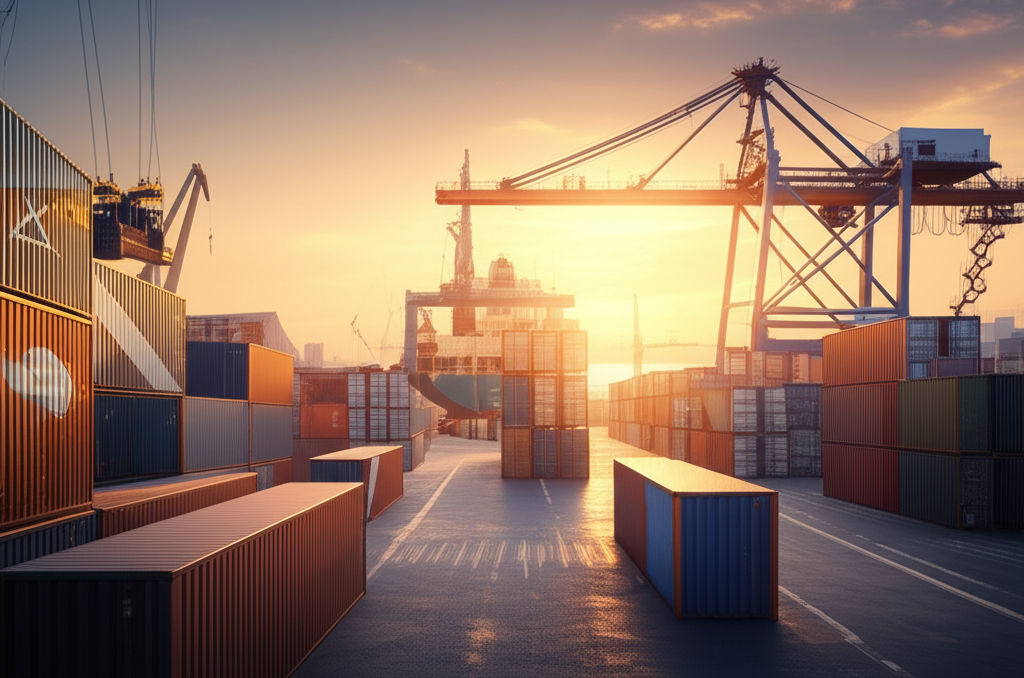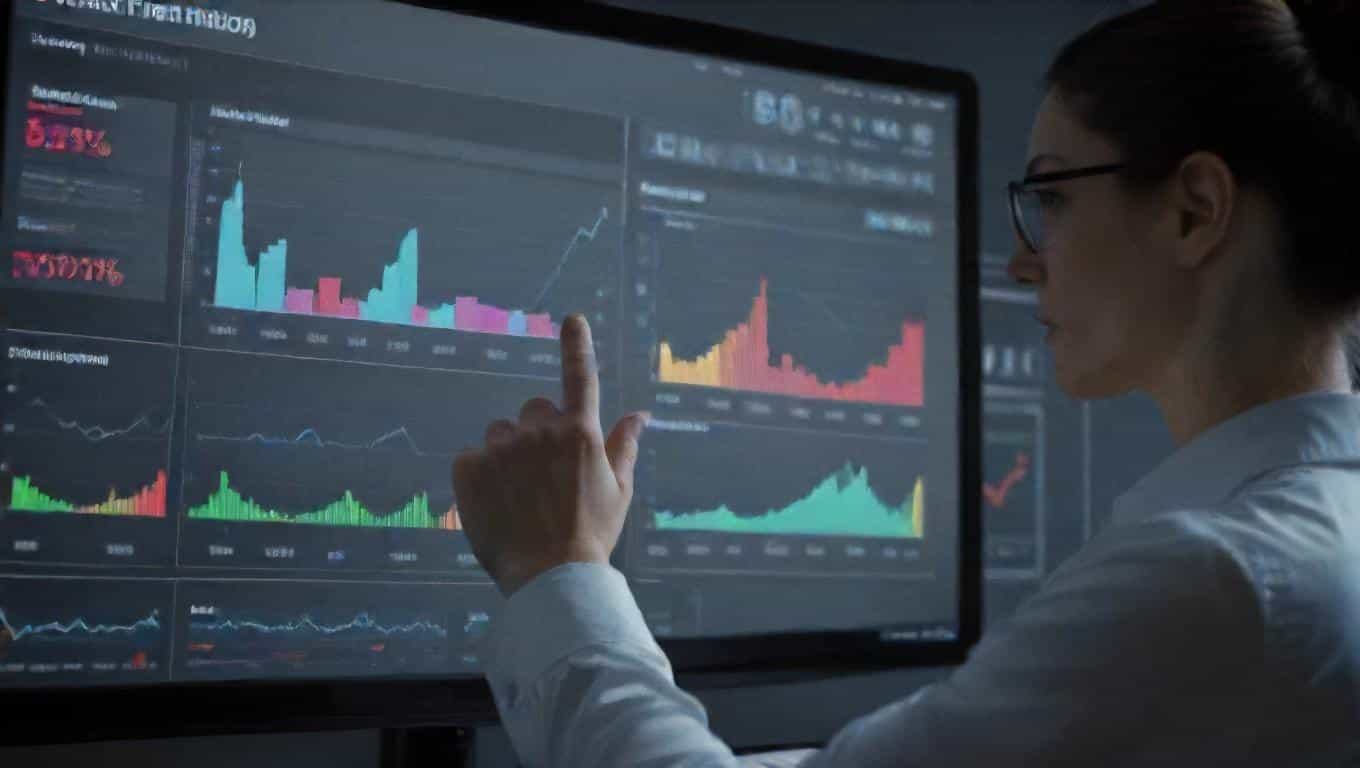International Trade: Post-Pandemic Reshaping
Emily Willis

Photo: International Trade: Post-Pandemic Reshaping
The COVID-19 pandemic acted as a powerful catalyst, fundamentally reshaping the landscape of international trade. What was once a system driven primarily by efficiency and cost-cutting has evolved into one prioritizing resilience, diversification, and strategic alignment. For a general audience, understanding these shifts is crucial, as they impact everything from product availability and pricing to global economic stability. This article delves into the transformative forces at play, offering insights into the new normal of global commerce.
The Pre-Pandemic Landscape: A World Optimized for Efficiency
Before the pandemic, global supply chains were largely optimized for "just-in-time" delivery and cost efficiency. Companies sought out the lowest-cost producers, often in far-flung regions, leading to complex, interconnected networks spanning continents. This approach, while highly effective at reducing production costs and increasing global trade volumes, also created inherent vulnerabilities. A disruption in one part of the world could, and often did, ripple across the entire chain, affecting industries globally.
The Pandemic's Shockwave: Disruptions and Revelations
The arrival of COVID-19 in early 2020 sent shockwaves through this finely tuned system. Lockdowns, factory shutdowns, and transportation bottlenecks caused widespread disruptions, leading to shortages of critical goods, from medical supplies to consumer electronics. Global trade volumes plummeted, with a 16% contraction in the first two quarters of 2020, exceeding even the impact of the global financial crisis. This unprecedented crisis laid bare the fragility of highly centralized supply chains and exposed the risks associated with over-reliance on single sourcing locations.
However, the pandemic also spurred a rapid recovery in global trade, driven by a shift in demand from services to goods and significant fiscal support. Global trade volumes rebounded strongly in 2021 and continued to grow in 2022, reaching pre-pandemic levels by the first quarter of 2021. Despite this recovery, the experience prompted a fundamental rethinking of international trade strategies.
Key Pillars of Reshaping International Trade
The post-pandemic era is characterized by several major trends reshaping global trade, moving beyond mere recovery to a more resilient and strategic approach.
Resilience Over Efficiency: Supply Chain Diversification
The immediate aftermath of the pandemic saw companies scrambling to secure supplies, highlighting the urgent need for robust supply chain resilience. Businesses are now prioritizing the ability to withstand and recover from unexpected disruptions. This shift means moving away from a sole focus on cost-cutting towards building more flexible and diversified supply chains.
- Diversifying Suppliers: Relying on a single supplier or region for critical components is a significant risk. Companies are actively seeking multiple suppliers across different geographic locations to mitigate this vulnerability. This "China plus one" or "China plus many" strategy aims to maintain some operations in existing hubs while adding facilities elsewhere.
- Enhanced Visibility and Transparency: Knowing where goods are at every stage of the supply chain is paramount. Businesses are investing in advanced tracking and monitoring systems, leveraging technologies like IoT (Internet of Things) and AI (Artificial Intelligence), to gain real-time insights into inventory levels, shipment status, and potential bottlenecks.
- Building Redundancy: This involves having alternative suppliers, backup inventory, and redundant logistics capacity to ensure continuity of operations in the event of disruptions. While it might increase costs in the short term, the long-term benefits of reduced risk are increasingly clear.
The Digital Acceleration: E-commerce and Automation
The pandemic dramatically accelerated the digital transformation of international trade. With physical channels facing unprecedented barriers, digital trade surged to the forefront.
- E-commerce Dominance: The share of e-commerce in the global retail market rose significantly, from 14% in 2019 to roughly 17% in 2020, reflecting a broad digital pivot. This trend continues, with online sales projected to increase globally. Consumers' acclimatization to the convenience of online shopping means this growth will likely persist, even as physical retail recovers.
- Digitally Deliverable Services: While total services exports declined significantly in 2020, digitally deliverable services (like ICT services) proved remarkably resilient, demonstrating the growing importance of digital technologies in supporting international trade and economic activity.
- Automation and AI: Digital technologies such as blockchain and AI are revolutionizing trade operations by enhancing transparency, streamlining processes, and improving efficiency through advanced data analysis and automation. From digital trade finance to electronic customs documentation, technology is making trade faster, more secure, and less paper-intensive.
Geopolitical Shifts and Trade Blocs
The global geopolitical landscape is playing an increasingly significant role in shaping international trade patterns. Countries are re-evaluating trading partners based on economic and national security concerns, leading to shifts in trade policies and alliances.
-
Regionalism and Trade Agreements: There's a renewed focus on regional trade agreements and economic blocs to strengthen economies and reduce dependence on distant markets. Initiatives like the African Continental Free Trade Area (AfCFTA) aim to boost intra-regional trade, fostering regional self-sufficiency and economic growth.
-
Nearshoring, Reshoring, and Friendshoring: These strategies are gaining traction as companies prioritize risk management over immediate cost-cutting.
- Reshoring involves bringing production back to the company's home country, offering benefits like enhanced control over intellectual property and quality standards, and reduced lead times.
- Nearshoring moves operations closer to the home country, often to neighboring nations, reducing transportation costs, improving communication, and offering faster delivery times.
- Friendshoring is a strategic relocation of supply chains to countries that share aligned political, economic, or ideological interests, mitigating geopolitical risks and strengthening alliances. While these strategies offer benefits, they can also lead to higher costs and increased supply chain complexity.
-
Protectionism: Some countries are adopting trade-restrictive measures to secure national interests, highlighting the delicate balance between global cooperation and national sovereignty in trade policies. This can lead to increased tariffs and trade barriers, potentially fraying supply chains.
Sustainability and Ethical Trade Practices
Sustainability has emerged as a critical concern, driving changes in international trade. Consumers, governments, and investors are increasingly demanding environmentally friendly goods and ethical practices.
- Growing Market for Green Goods: There's a robust and growing market for environmentally friendly goods, driven by conscious consumerism and supportive government policies. This sector has shown impressive growth and resilience, outperforming global trade in many aspects.
- ESG Integration: Environmental, Social, and Governance (ESG) factors are no longer optional; they are central to business success in global trade. Companies are integrating ESG principles to enhance financial stability, access better financing, and strengthen market positioning.
- Supply Chain Due Diligence: New regulations are placing stricter requirements on businesses to ensure their supply chains do not harm people or the planet, covering issues like deforestation and labor exploitation. This emphasizes the need for transparent and traceable processes across the supply chain.
Navigating the New Normal: Strategies for Businesses and Nations
The post-pandemic reshaping of international trade presents both challenges and opportunities. To thrive in this dynamic environment, businesses and nations must adopt proactive strategies.
For Businesses: Building a Resilient and Agile Trade Strategy
- Diversify and Decentralize: Actively seek multiple suppliers and consider establishing production hubs in various regions to reduce reliance on single points of failure. Implement a "China plus one" approach where appropriate.
- Embrace Digital Transformation: Invest in technologies like AI, blockchain, and advanced analytics for real-time supply chain visibility, automation of customs processes, and enhanced data-driven decision-making. Leverage e-commerce platforms for broader market access.
- Prioritize Risk Management: Develop comprehensive risk assessment and mitigation plans for your supply chains, considering geopolitical, environmental, and economic factors. Build redundancy into critical operations.
- Integrate Sustainability: Embed ESG principles into your trade strategies. This not only meets growing consumer and regulatory demands but also opens doors to new markets and financing opportunities.
- Foster Strong Partnerships: Collaborate closely with suppliers, logistics partners, and even competitors to share information and build more robust, transparent supply chain ecosystems.
For Nations: Fostering a Supportive and Adaptable Trade Environment
- Invest in Infrastructure: Enhance digital and physical infrastructure to support efficient trade flows, including modernizing ports, transportation networks, and digital connectivity.
- Promote Regional Integration: Engage in and strengthen regional trade agreements to build more resilient and localized supply chains and reduce over-dependence on distant markets.
- Harmonize Regulations: Work towards harmonizing international trade regulations, especially concerning digital trade and sustainability standards, to reduce friction and facilitate cross-border commerce.
- Support Digital Adoption: Provide incentives and support for businesses, particularly SMEs, to adopt digital tools and participate in the digital economy, bridging existing digital divides.
- Balance Security and Openness: While prioritizing national security and supply chain resilience, avoid excessive protectionism that could fragment global trade and hinder economic recovery.
Challenges and Opportunities Ahead
The path forward is not without its complexities. Geopolitical tensions, inflationary pressures, and the need for significant investment in new technologies and sustainable practices pose ongoing challenges. However, these very challenges also create immense opportunities for innovation, new business models, and a more equitable and sustainable global trading system. The increased focus on regionalization, for instance, can stimulate economic growth and job creation in beneficiary countries.
Conclusion
The post-pandemic reshaping of international trade marks a pivotal moment
Latest ✨
View AllRevolutionize your learning! Neuroscience unlocks how your brain learns, creating personalized, engaging, and highly effective educational experiences.
Emily Willis
The use of performance enhancement drugs (PEDs) in sports raises significant ethical concerns, as it creates an unfair advantage, poses health risks, and undermines the spirit of fair competition. Factors contributing to doping include intense competition, financial pressures, and a culture that normalizes doping.
Emily Willis
trend of staying at unique and Instagrammable hotels as an experience in itself. It explores seven fascinating and photogenic hotels around the world, including the Ice Hotel in Sweden, Giraffe Manor in Kenya, Attrap'Rêves in France, Treehotel in Sweden, Poseidon Undersea Resort in Fiji, Amangiri in Utah, USA, and Kelebek Cave Hotel in Turkey. Each hotel offers a unique and luxurious experience, from sleeping in a sculpture of ice to dining with giraffes, sleeping under the stars in bubble domes, staying in elevated treehouses, luxury underwater accommodation, secluded luxury in desert serenity, and historic charm in cave dwellings. These hotels promise a stay unlike any other and are perfect for capturing envy-inducing photos for Instagram feeds.
Emily Willis
Master strategic talent acquisition. Go beyond recruitment to identify, attract, & secure top talent that drives innovation & future organizational success.
Emily Willis
Business
View All
August 5, 2024
Tips for Choosing the Right Investment Product for Your Needsprovides guidance on investing money, starting with understanding financial goals and risk tolerance. It explains different investment options such as stocks, bonds, mutual funds, ETFs, real estate, and retirement accounts, and emphasizes the importance of diversification.
Emily Willis

June 9, 2025
Optimize Your Sales FunnelBoost conversions & revenue! Optimize your sales funnel with our comprehensive guide. Turn prospects into loyal customers using actionable strategies.
Emily Willis

June 8, 2025
Business Networking: Connect & GrowUnlock professional success! Learn actionable strategies for effective business networking to expand opportunities, build credibility, and drive career growth.
Emily Willis
Economy
View AllNavigate financial markets confidently! This guide demystifies risk management, helping you protect investments, enhance stability, and secure your financial fu...
Read MoreIncome inequality: a global challenge. Learn its definition, how it's measured, and key drivers like technology & globalization. Understand its profound societa...
Read MoreUncover the invisible market forces shaping prices & production. Learn how supply & demand drive our economy—essential for consumers & businesses.
Read MoreEntertainment
View All
August 5, 2024
Music Universal Language: Connecting and Inspiring Across CulturesMusic has the power to transcend language barriers and connect people on a deep emotional level. It serves as a bridge between cultures, fostering understanding and appreciation for diversity. The universality of rhythm and melody creates a sense of unity, while the diversity of musical styles allows for exploration and creativity.
Emily Willis

August 4, 2024
Social Media's Influence on Celebrity Culture: Trends and ImpactsSocial media has revolutionized celebrity culture by enabling direct fan engagement, promoting authenticity, and creating new trends such as influencer marketing and digital content creation.
Emily Willis

August 5, 2024
Video Games: Enduring Appeal, Immersive Worlds, and Diverse Genresenduring appeal of video games, highlighting their ability to transport players to fantastical realms, challenge their minds, and foster connections with others. It explores the magic of immersive worlds, the vast array of genres available, and the social power of gaming.
Emily Willis
Health
View AllHeart disease is a leading cause of death globally, but early detection and prevention strategies can reduce its impact. This article discusses the importance of early detection, common risk factors, preventive measures, and lifestyle changes for heart health. Understanding heart disease, recognizing symptoms, and undergoing regular screenings are crucial. Common risk factors include high blood pressure, high cholesterol, diabetes, smoking, obesity, physical inactivity, and family history. Symptoms of heart disease include chest pain, shortness of breath, fatigue, irregular heartbeat, and swelling. Diagnostic tests and screenings include blood pressure measurement, cholesterol screening, blood glucose test, ECG, stress test, and imaging tests. Preventive measures include adopting a heart-healthy diet, regular physical activity, quitting smoking, managing stress, maintaining a healthy weight, and limiting alcohol consumption. Medications and treatment options may be necessary for individuals at high risk or diagnosed with heart disease.
Emily Willis
Nutrition is crucial for maintaining overall body health, impacting energy levels, disease prevention, and overall well-being. A healthy diet includes fruits, vegetables, whole grains, proteins, healthy fats, and hydration. Proper nutrition positively affects energy levels, immune function, heart health, weight management, and mental health. Practical tips for improving nutrition include planning balanced meals, reading food labels, cooking at home, limiting processed foods, and staying hydrated. By prioritizing nutrition and making informed choices, individuals can enhance their health and well-being.
Emily Willis
The focus of nutrition advice is shifting towards personalized nutrition, taking into account individual genetic makeup, lifestyle, and health goals to create a customized eating plan. This approach can lead to improved health outcomes, enhanced nutrient absorption, increased motivation, and targeted support for specific health concerns.
Emily Willis
Trending 🔥
View All
1
2
3
4
5
6
7
8
9
10
Lifestyle


Sports
View AllAugust 4, 2024
Benefits of Cross Training for Athletes: Improves Performance and Prevents Injuries
Read MoreAugust 5, 2024
Sportsmanship in the Spotlight: Cultivating Respect, Integrity, and Ethical Behavior
Read MoreAugust 5, 2024
Sports for Social Good: Promoting Diversity, Inclusion, and Community Engagement
Read MoreTechnology
View All
August 5, 2024
How AI is Used to Solve Problems in Various Industries
Artificial Intelligence (AI) is reshaping industries across the globe, from healthcare to finance, by solving complex problems, increasing efficiency, and driving innovation. In healthcare, AI is saving lives through drug discovery, disease diagnosis, personalized medicine, and virtual health assistants.

August 4, 2024
Bridging the Digital Divide: Ensuring Everyone Has Access to Technology
we can bridge this gap and create a more inclusive digital landscape.

August 5, 2024
How to Build a Smart Home Using IoT Devices
The concept of a smart home has become a practical reality for many homeowners, utilizing IoT devices to automate and control household functions.

August 4, 2024
Get to know Blockchain Technology and its Potential in the Future
Blockchain technology, initially known for its association with Bitcoin, has evolved into a versatile tool with applications beyond cryptocurrency. It is a decentralized digital ledger that ensures secure, transparent, and tamper-resistant transactions. Key features include decentralization, security, transparency, and immutability. Current applications include cryptocurrencies, supply chain management, smart contracts, digital identity verification, healthcare, and voting systems.



















